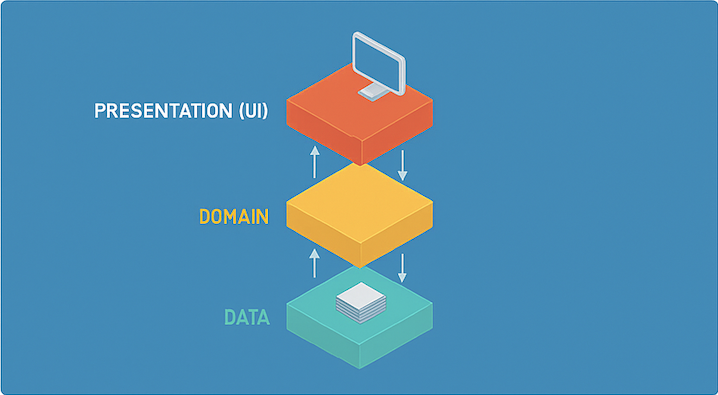Clean Architecture in iOS: A Beginner-Friendly Guide
Learn how Clean Architecture can improve your iOS app structure using MVVM, UseCases, and Dependency Injection.

What is Clean Architecture?
Clean Architecture is a software design philosophy that promotes separation of concerns by dividing applications into layers. This structure improves code readability, testing, and scalability over time.
"The only way to go fast, is to go well." — Robert C. Martin (Uncle Bob)
Why use it in iOS?
- Improved modularity and easier refactoring
- Separates business logic from UI layers
- Promotes testability and clean dependencies
Typical Architecture Layers
- Presentation (UI): SwiftUI Views, ViewModels
- Domain: UseCases, Entities (pure business logic)
- Data: Repositories, API services, database handlers
Example: Login Flow
When a user attempts to log in, the ViewModel delegates to a LoginUseCase. This use case relies on a LoginRepository, which calls the actual network service. This separation allows mocking the repository in tests without touching the network.
View → ViewModel → UseCase → Repository → NetworkService
Getting Started
Start small. Apply Clean Architecture principles to just one feature. As you see the benefits in modularity and test coverage, you can scale it across the app.
Conclusion
Clean Architecture isn’t a silver bullet, but it's a proven pattern for teams building apps that are meant to scale and grow. Adopt it early to save time later.
Related Posts
- Understanding Dependency Injection in iOS
A practical guide to DI with real-world examples using protocols and containers.
- Testing Strategies in Clean Architecture
Learn how to effectively write tests for your UseCases and ViewModels.